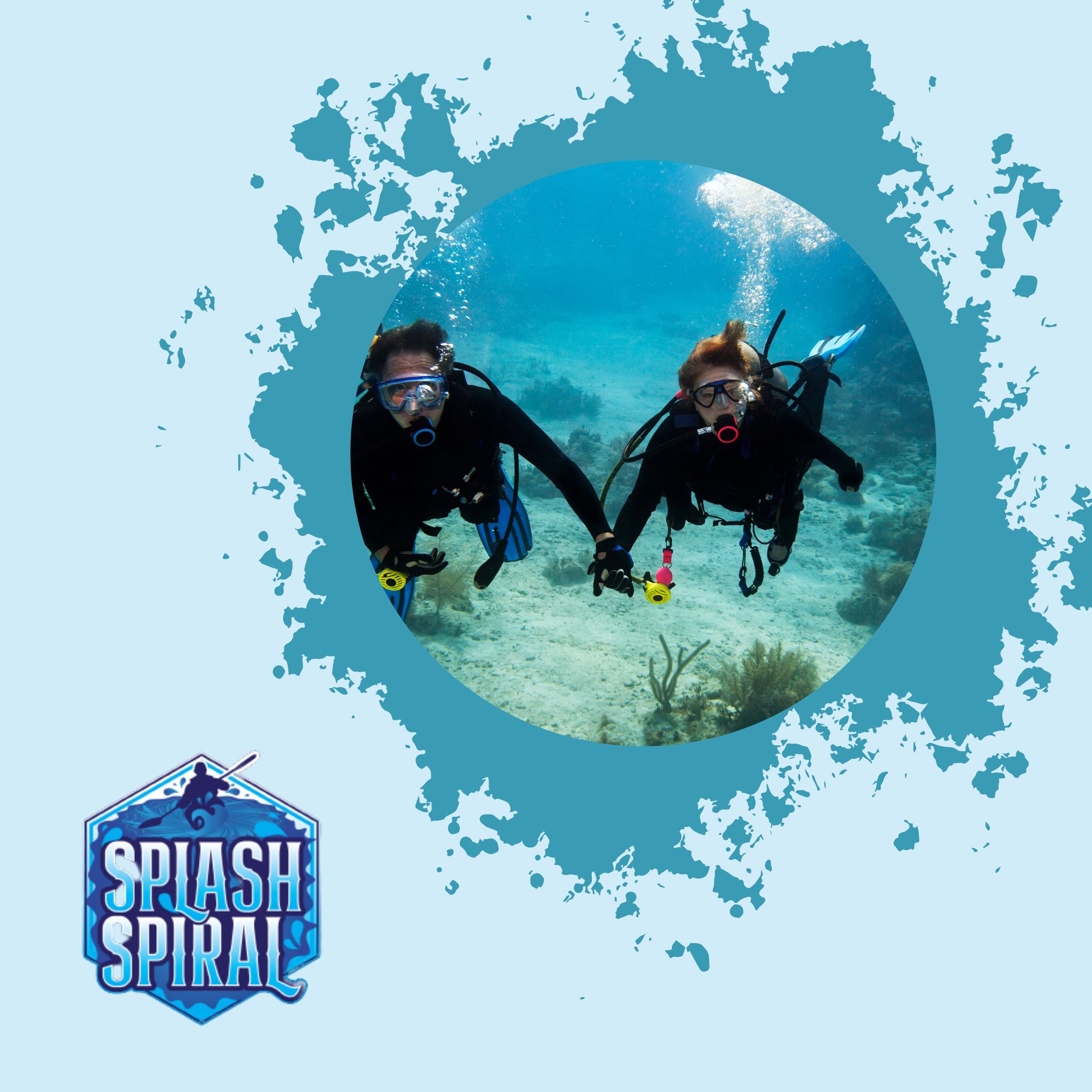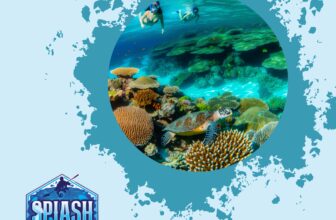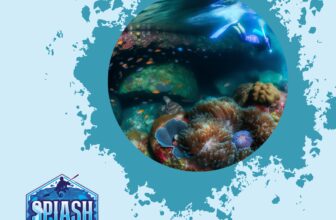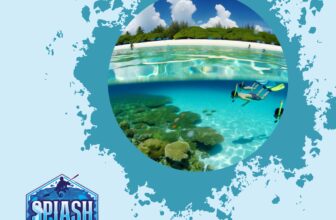
Have you ever gone scuba diving in a lake surrounded by snowcapped mountains? Or explored the depths of a high-altitude ancient lake? Altitude diving can offer unique and thrilling experiences that cannot be found in regular ocean diving.
Altitude diving refers to scuba diving in freshwater lakes, rivers, or quarries located more than 1,000 feet (305 meters) above sea level. Due to the lower atmospheric pressure at higher altitudes, there are special considerations and challenges that divers must understand before attempting an altitude dive.
One of the most important aspects of altitude diving is proper training. It is crucial to receive specialized training from a certified instructor who has experience with altitude diving before attempting an altitude dive.
This training will cover topics such as how to properly plan and execute a dive at high altitudes, how to handle changes in pressure and gas mixtures due to decreased atmospheric pressure, and how to use specialized equipment designed for altitude diving. Another critical aspect of altitude diving is having the right equipment that is specifically designed for high-altitude environments.
This includes equipment such as regulators, dive computers, and buoyancy compensators that have been tested and approved for use at high elevations. When it comes to safety during an altitude dive, it is essential that all equipment is functioning properly so divers must make sure their gear has been recently serviced by a certified technician.
Scuba diving at higher elevations offers unique experiences with stunning views and diverse marine life not found in regular ocean dives. However, due to the unique challenges associated with altitude diving including changes in pressure and gas mixtures as well as specialized equipment requirements, proper training from a certified instructor and using approved gear are crucial elements necessary for safe dives.
The Thrills of Altitude Diving
Unique Challenges and Rewards of Diving at High Altitudes
Altitude diving is not for the faint of heart, but it’s an experience that’s well worth it for thrill-seekers. The most obvious challenge is the altitude itself, which can cause divers to experience symptoms such as headaches, dizziness, and shortness of breath.
This means that altitude diving requires a higher level of fitness and training than regular scuba diving. But the rewards far outweigh any discomforts.
One major draw of altitude diving is the unique environment that comes with being high up in the mountains or other elevated areas. Often there’s less human activity in these areas compared to more popular diving sites, meaning you’ll have a better chance of seeing rare and exotic marine life.
Stunning Views and Diverse Marine Life
Speaking of marine life, it’s no secret that high-altitude locations offer some truly stunning views both above and below water. Depending on where you go, you might see snow-capped peaks looming above crystal-clear lake waters or colorful coral formations nestled amidst rocky cliffs. And when it comes to marine life, there’s never a shortage of surprises waiting in store for you when you’re exploring new environments at high altitudes.
You might spot schools of rainbow trout swimming through underwater canyons or catch a glimpse of freshwater eels slithering along rocky crevices. Overall, if you’re an adventurous diver who loves discovering new environments and experiencing unique challenges during your dives, then altitude diving might be just what you need to take your scuba game to new heights – literally!
Preparing for Altitude Diving
Understanding the effects of altitude on the body and dive equipment
Before embarking on an altitude diving adventure, it is essential to understand how high altitudes impact diving physiology and equipment. At higher elevations, air pressure decreases, making it harder for our bodies to absorb oxygen.
The reduced atmospheric pressure also affects dive equipment, altering the accuracy of dive tables and increasing the risk of over-exertion. One significant effect of high-altitude diving is decompression sickness (DCS), commonly referred to as “the bends.” This happens when nitrogen builds up in your bloodstream due to dissolved gas from scuba diving.
At higher altitudes, there’s less air pressure pushing on your body, which can cause nitrogen bubbles to form. It’s crucial to keep this in mind when planning dives and stay within recommended depth limits while adjusting dive tables accordingly.
Proper Planning for safe dives
Proper planning is key when preparing for altitude diving. Make sure you have undergone proper training beforehand and possess all necessary certifications for high-altitude environments. When planning a dive trip, research suitable destinations that offer safe conditions for altitude diving.
It’s also essential to consider environmental factors such as weather conditions and water temperature before hitting the water. You should ensure that you have access to appropriate gear such as drysuits or wetsuits that will keep you warm in cold waters.
Always make sure that your equipment is appropriately calibrated before each dive and take time to understand how changes in atmospheric pressure will affect your gear’s functionality. Preparing yourself mentally and physically for an altitude diving trip requires thorough research into environmental factors like air pressure changes at higher elevations; proper training beforehand with all required certifications; proper gear calibration pre-dive; location choice based on safety precautions taken into account (weather conditions) along with access to appropriate gear such as drysuits or wetsuits that will keep you warm in colder waters.
Popular Altitude Diving Destinations
Lake Tahoe, California/Nevada
Lake Tahoe is a beautiful freshwater lake that straddles the border of California and Nevada. It’s known for its crystal-clear waters, towering pine trees, and snow-capped mountains.
What makes Lake Tahoe so special for altitude diving is its elevation – the lake sits at an impressive 6,225 feet above sea level. The high altitude of Lake Tahoe presents unique challenges for divers, such as increased air consumption and changes to dive tables due to reduced atmospheric pressure.
However, these challenges are offset by the stunning views and diverse marine life found in the lake. Divers can expect to see rainbow trout, kokanee salmon, crawdads, and even the occasional sunken boat or airplane wreckage from years past.
To ensure a safe dive at Lake Tahoe’s high altitude, it’s important to plan ahead and take proper precautions. This includes adjusting dive tables accordingly and making sure you have enough air supply to account for increased consumption rate.
Lake Titicaca, Peru/Bolivia
Lake Titicaca is located on the border of Peru and Bolivia in South America. At an elevation of over 12,500 feet above sea level (the highest navigable lake in the world), diving here requires special consideration due to extremely limited access beyond basic amenities.
Despite its formidable height above sea level though – diving here has considerable perks that are worth braving those thin mountain air conditions for – including: – Crystal-clear water with visibility up to 200 feet
– A rich cultural history preserved underwater – The opportunity to explore some truly unique aquatic life such as giant frogs indigenous only to Lake Titicaca
Divers planning on visiting Lake Titicaca should ensure they’re physically prepared since they’ll need acclimatization time before attempting a dive. Proper hydration and gradual ascent are key to avoid altitude sickness.
Lake Malawi, Africa
Lake Malawi is the third largest lake in Africa and the ninth largest in the world. It’s located between Malawi, Mozambique, and Tanzania, spanning an impressive 360 miles in length.
Altitude diving at Lake Malawi offers divers an entirely different experience than a typical ocean dive. The lake boasts over 1000 species of cichlid fish endemic to the region, providing divers with a unique opportunity to see some of the most diverse freshwater marine life on Earth.
The diving conditions are also ideal due to warm water temperatures year-round and excellent visibility up to 80 feet. To safely enjoy the treasures of Lake Malawi’s high-altitude waters, it is important for divers to plan ahead by adjusting dive tables accordingly before taking that exciting plunge into exploration.
The Science Behind Altitude Diving
Altitude diving is a unique subcategory of scuba diving that presents its own set of challenges. The higher you go, the lower the air pressure becomes, which can have significant impacts on diving physiology and equipment. When you descend underwater, the water pressure compresses the air in your lungs and regulator, making it easier to breathe.
However, at high altitudes, there is less air pressure pushing down on your body and equipment. This means that breathing can become more difficult and your regulator might not function properly.
The reduced air pressure at high altitudes also affects how your body absorbs nitrogen. Nitrogen is a gas that makes up part of the air we breathe and dissolves in our bloodstream when we dive.
When divers ascend after a dive, they need to allow their bodies to gradually release this nitrogen to prevent decompression sickness or “the bends.” At high altitudes, there is less atmospheric pressure forcing nitrogen into our bloodstream. As a result, divers need to adjust their dive tables accordingly and take extra precautions when ascending.
Tips for adjusting dive tables at high altitudes
If you plan on diving at high altitude locations such as Lake Tahoe or Lake Titicaca, it’s important to adjust your dive tables accordingly before you go underwater. This involves using specialized charts or software that take into account the reduced atmospheric pressure at higher elevations.
Your dive instructor should be able to help you make these adjustments based on the altitude of your intended dive site. One common adjustment involves decreasing your maximum allowable bottom time for dives at higher elevations.
This helps account for the fact that less nitrogen will dissolve in your bloodstream due to the reduced atmospheric pressure. If you’re unsure about how to adjust your dive tables or don’t have experience with altitude diving, consider taking a specialized course or consulting with an experienced instructor before attempting any dives.
How to properly acclimate to higher elevations before diving
In addition to adjusting your dive tables, it’s important to take measures to acclimate your body to higher elevations before you start your dives. This can help prevent altitude sickness, a condition that occurs when your body struggles to adjust to the reduced air pressure at high altitudes. Symptoms of altitude sickness can include headache, nausea, dizziness, and shortness of breath.
To acclimate properly, it’s recommended that you spend several days at a higher elevation before attempting any strenuous activities such as scuba diving. During this time, make sure you’re drinking plenty of water and avoid alcohol or caffeine which can exacerbate dehydration.
Slowly increase your level of physical activity over the course of several days until you feel comfortable diving at higher elevations. By taking these precautions and making adjustments to your dive planning and equipment, you can safely enjoy the unique thrills of altitude diving.
Conclusion: Reaching New Heights in Scuba Diving
Excitement and Beauty of Altitude Diving
Altitude diving is a unique experience that provides thrill-seekers with an exciting challenge. With proper preparation, diving at high altitude can be a fulfilling experience that offers stunning views and the chance to see unique marine life.
The challenges of altitude diving are many, but the rewards are worth it! From testing your physical capabilities to exploring underwater terrain unlike any other, altitude diving is an unforgettable adventure.
One of the most exciting aspects of altitude diving is the chance to see new marine life in waters seldom explored by divers. This includes species only found at higher elevations or those that have adapted to survive in unique conditions such as Lake Malawi’s cichlid fish.
Altitude diving provides ample opportunities for underwater photography enthusiasts to capture stunning shots of these rare creatures. Additionally, with fewer divers visiting these locations, there’s a good chance you’ll have the dive site all to yourself!
Encouragement to Seek Out New Heights in Scuba Diving
If you’re looking for a new adventure or want to take your scuba diving skills to new heights, then altitude diving is an excellent option. With training and preparation, anyone can enjoy this exciting activity safely.
There are countless sites around the world waiting for you to explore them – from Lake Tahoe’s crystal-clear waters in California/Nevada or Lake Titicaca’s cultural treasures in Peru/Bolivia. Don’t let fear hold you back from experiencing the excitement and beauty of altitude diving.
With proper guidance and planning, it can be one of the most rewarding experiences scuba divers can have! So get ready for an unforgettable adventure that will take you to new heights both physically and mentally – both figuratively and literally.
Reaching new heights through scuba diving is a thrilling experience that should not be missed. Altitude diving provides a unique challenge and adventure for those who are up for it.
With proper training, preparation, and equipment, you can safely explore the wonders of high-altitude dive sites around the world. So, don’t hesitate – start planning your next altitude diving adventure today!







